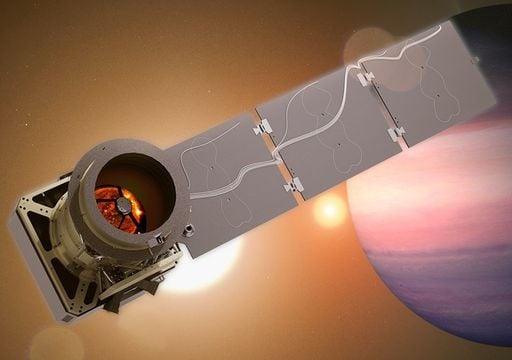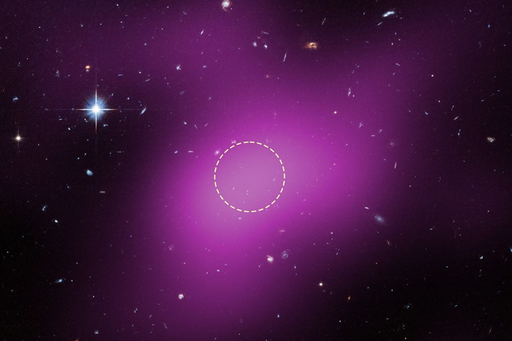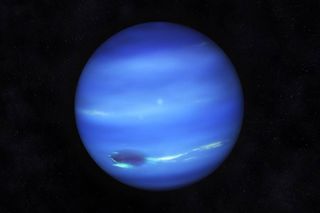"Too blue" Neptune closer to Uranus' shade of greeny-blue
The gas giants Neptune and Uranus are actually closer in colour than previous images have suggested.
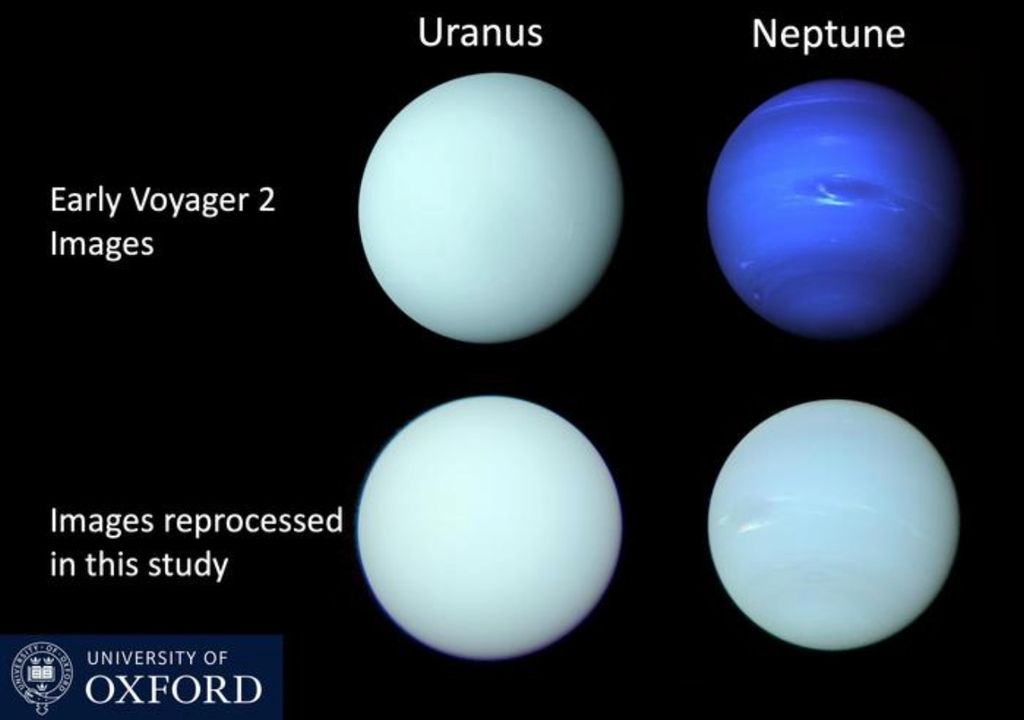
Images of Neptune typically show the gas giant as a deep azure blue colour, while its neighbour Uranus is a pale cyan green but a new study has revealed that they are actually closer in colour – a similar shade of greenish-blue.
Most modern images of the planets don’t accurately reflect their true colours; early images, including those taken by Voyager 2, the only spacecraft to fly past these planets, recorded images in separate colours. These single-colour images were later recombined to create composite colour images but weren’t always accurately balanced.
Too blue
“Although the familiar Voyager 2 images of Uranus were published in a form closer to ‘true’ colour, those of Neptune were, in fact, stretched and enhanced, and therefore made artificially too blue,” explains Professor Patrick Irwin from the University of Oxford’s Department of Physics, who led the study, published in Monthly Notices of the Royal Astronomical Society.
“Even though the artificially-saturated colour was known at the time amongst planetary scientists – and the images were released with captions explaining it – that distinction had become lost over time. Applying our model to the original data, we have been able to reconstitute the most accurate representation yet of the colour of both Neptune and Uranus.”
The study used data from Hubble Space Telescope’s Space Telescope Imaging Spectrograph (STIS) and the Multi Unit Spectroscopic Explorer (MUSE) on the European Southern Observatory’s Very Large Telescope to re-balance the composite colour images recorded by the Voyager 2 camera and by Hubble’s Wide Field Camera 3 (WFC3).
STIS and MUSE record each pixel as a continuous spectrum of colours, meaning their observations can be unambiguously processed to determine the true apparent colour of Uranus and Neptune. The data revealed that Uranus and Neptune are both a similar shade of greenish blue, although Neptune has a hint of additional blue, which the model shows is down to a thinner haze layer on the planet.
Uranus’ colour change
The study also explains why Uranus’s colour changes slightly during its 84-year orbit of the Sun. Images of the planet were compared to brightness measurements taken by the Lowell Observatory in Arizona between 1950 and 2016, at blue and green wavelengths; this showed Uranus appears greener at its solstices when one of the planet’s poles is pointed towards the Sun, but bluer during its equinoxes, when the Sun is over the equator.
Uranus’ highly unusual spin is partly responsible for this; the planet spins almost on its side during its orbit, so during its solstices, one of its pole points almost directly towards the Sun and Earth. This is significant because any variations to the reflectivity of the polar regions would have a big impact on Uranus’s overall brightness when viewed from Earth – however, how or why this reflectivity differs is a mystery.
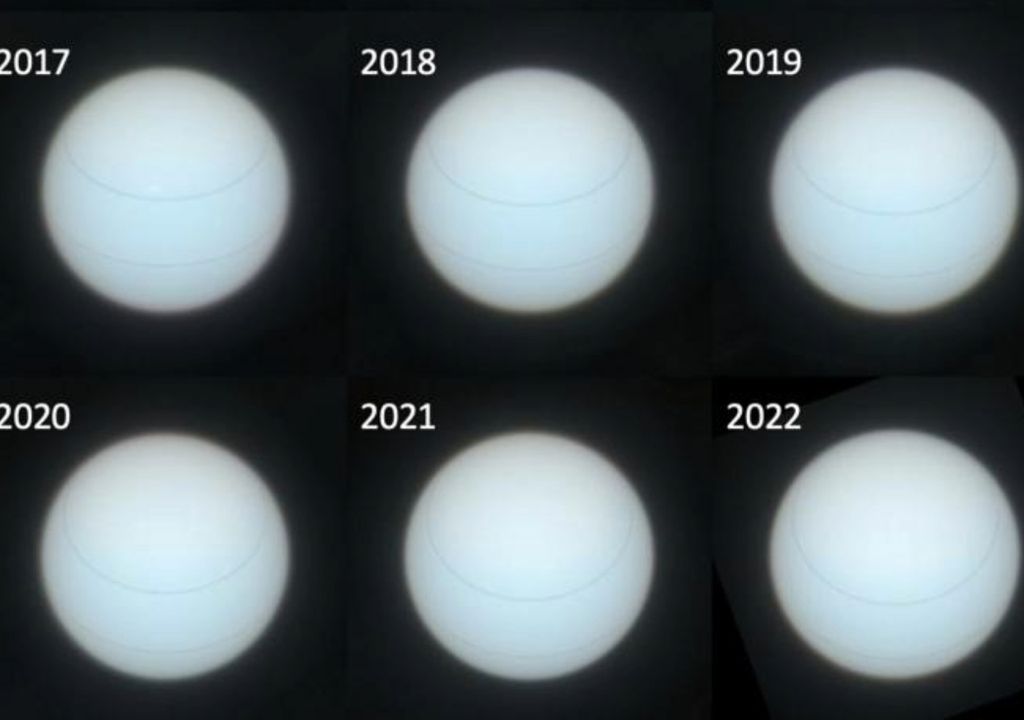
A new model comparing the spectra of Uranus’s polar regions to its equatorial regions found the polar regions are more reflective at green and red wavelengths than at blue wavelengths, partly because methane, which is red absorbing, is around half as abundant near the poles than the equator.
But this didn’t fully explain the colour change, so researchers added a new variable to the model – a “hood” of gradually thickening haze of suspected methane ice particles which has been observed over the summer, sunlit pole as the planet moves from equinox to solstice. When simulated in the model, the ice particles further increased the reflection at green and red wavelengths at the poles, offering an explanation as to why Uranus is greener at the solstice.
“This is the first study to match a quantitative model to imaging data to explain why the colour of Uranus changes during its orbit,” explains Irwin. “In this way, we have demonstrated that Uranus is greener at the solstice due to the polar regions having reduced methane abundance but also an increased thickness of brightly scattering methane ice particles.”


